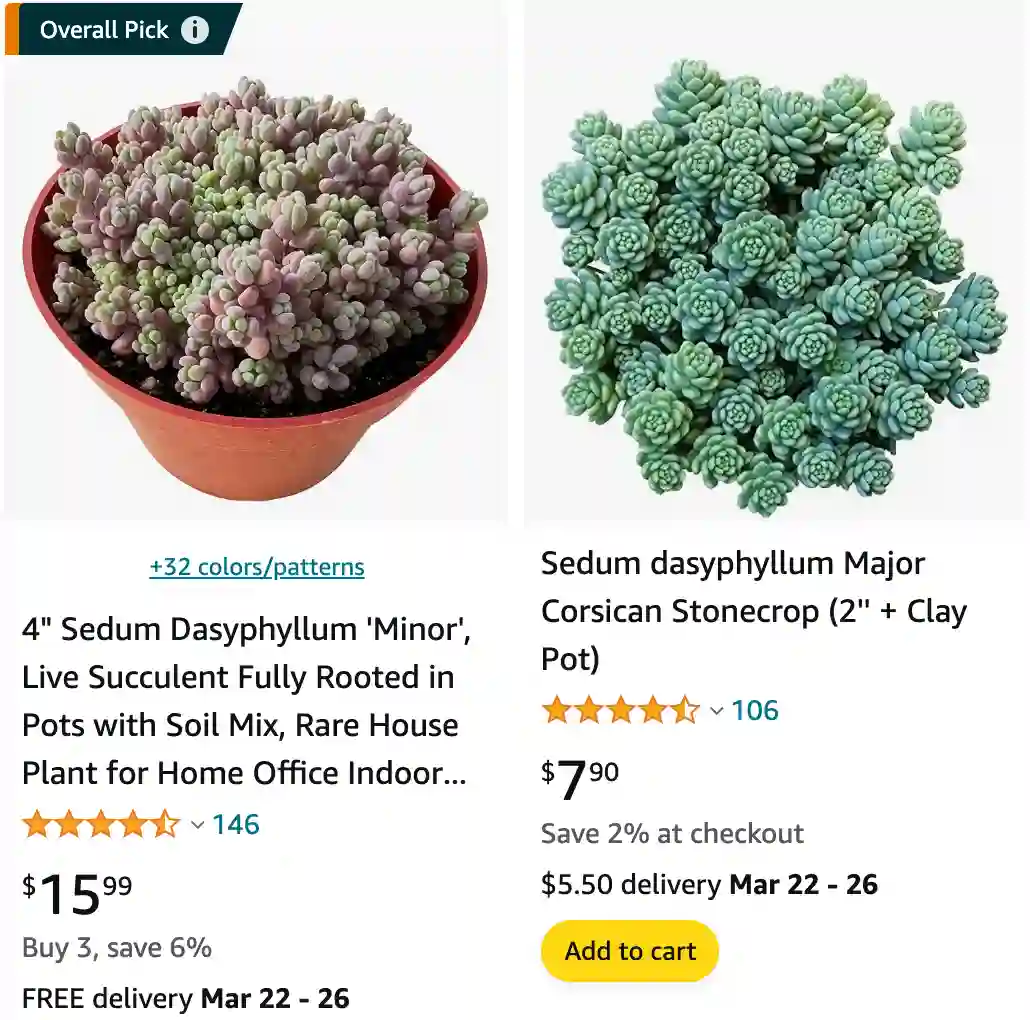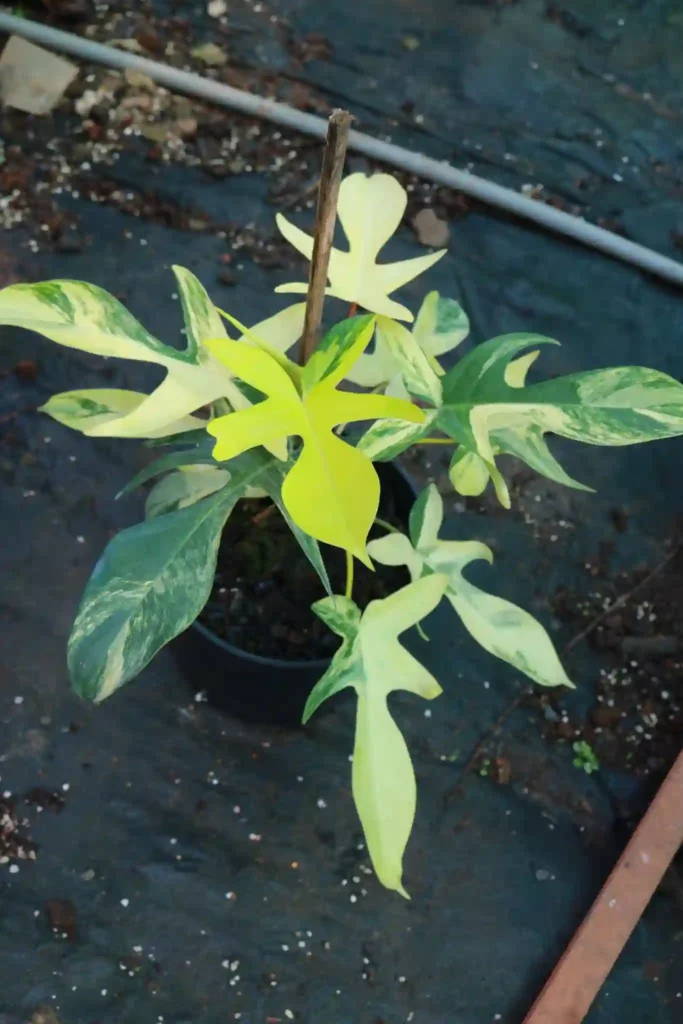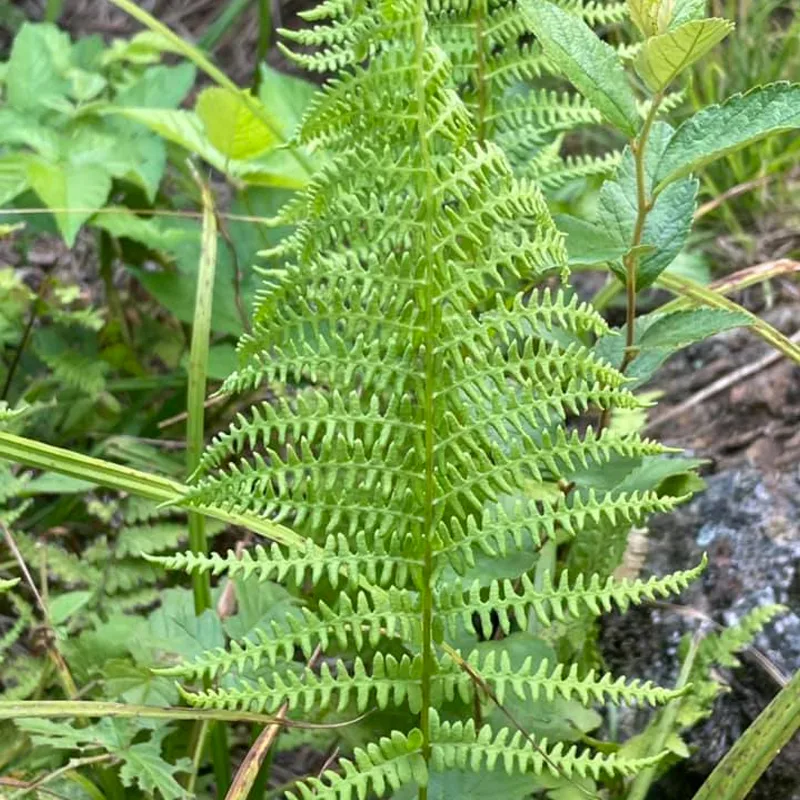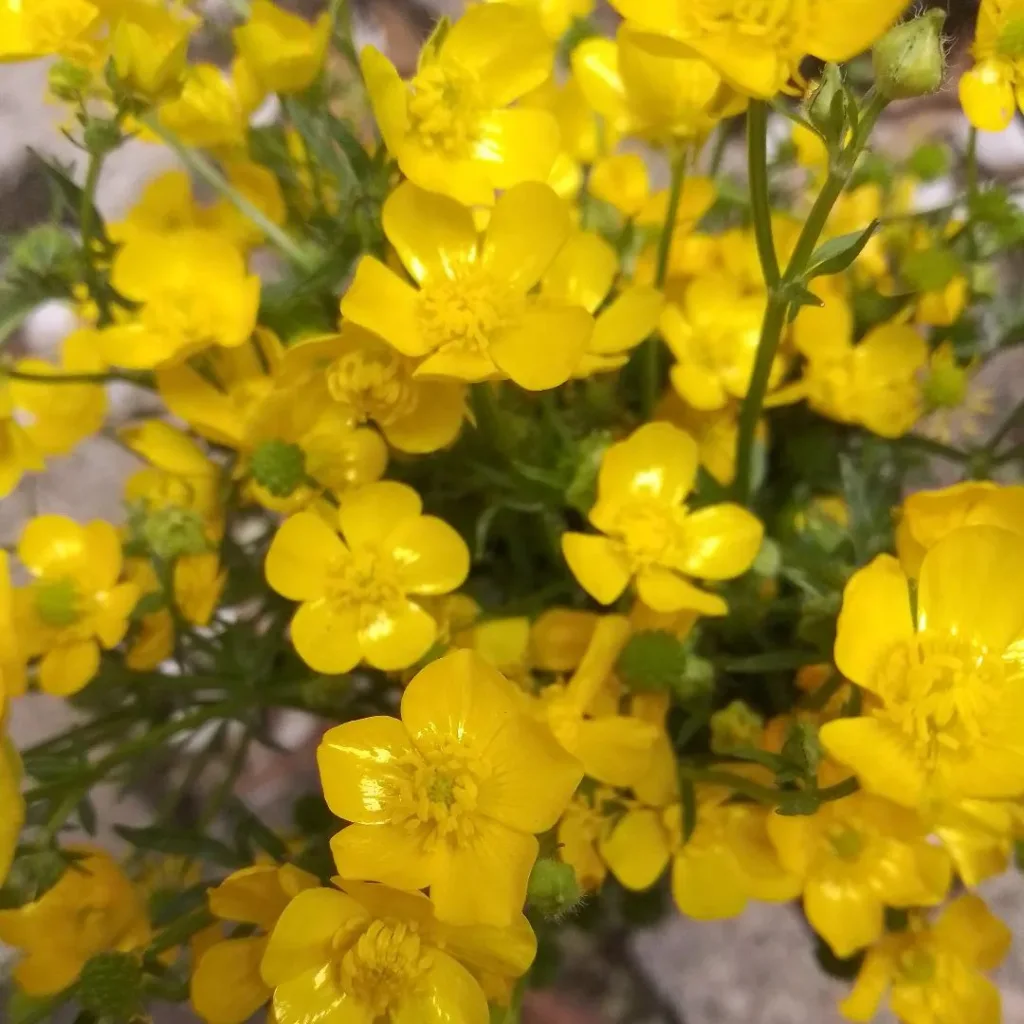
My Journey with Sedum dasyphyllum: A Succulent Tale
As an avid plant enthusiast, discovering Sedum dasyphyllum was like finding a hidden gem in the world of succulents. This charming, low-growing plant with its tiny, blue-green leaves and delicate white flowers quickly became a favorite in my collection. In this article, I’ll share my personal experience and tips on how to care for, propagate, and repot Sedum dasyphyllum, along with some advice on where you can buy this delightful succulent.
490 Species in Genus Sedum
What is Sedum dasyphyllum?
Sedum dasyphyllum, commonly known as Corsican Stonecrop or Thick-leaved Stonecrop, is a small, perennial succulent native to the Mediterranean region. This plant is known for its dense, mat-forming habit and its ability to thrive in rocky, well-drained soils. The foliage can range from blue-green to gray, with pinkish hues appearing in direct sunlight or during cooler temperatures. Its tiny, star-shaped white flowers bloom in the summer, adding a delicate charm to any garden or container.
How to Propagate Sedum dasyphyllum?
One of the most rewarding aspects of growing Sedum dasyphyllum is its ease of propagation. Here’s how I do it:
- Leaf Cuttings: Gently twist off a healthy leaf from the main plant. Allow the leaf to callous over for a day or two in a dry, shaded area. Once the cut end has dried, place the leaf on well-draining soil. Mist the soil lightly until roots begin to form, which usually takes a few weeks.
- Stem Cuttings: Cut a healthy stem from the plant, ensuring it’s at least a few inches long. Let the cutting dry out for a couple of days to callous over. Plant the stem in a pot with well-draining soil and water sparingly until new growth appears.
- Division: For more mature plants, you can divide the clumps. Gently remove the plant from its pot, and carefully separate the root ball into smaller sections. Replant each section in a new pot with fresh soil.
How to Care for Sedum dasyphyllum?
Caring for Sedum dasyphyllum is relatively straightforward, making it an excellent choice for both novice and experienced gardeners. Here are some care tips based on my experience:
- Light: Sedum dasyphyllum thrives in full sun to partial shade. While it can tolerate some shade, the plant will be more compact and colorful with at least six hours of direct sunlight each day.
- Watering: Like most succulents, Sedum dasyphyllum prefers infrequent but deep watering. Allow the soil to dry out completely between waterings to prevent root rot. During the winter months, reduce watering as the plant enters a dormant phase.
- Soil: A well-draining soil mix is essential. I use a cactus or succulent mix with added perlite or pumice to ensure good drainage. This prevents water from sitting in the soil and causing root rot.
- Fertilizing: Fertilize sparingly. I use a diluted, balanced liquid fertilizer once a month during the growing season (spring and summer). Avoid fertilizing in the fall and winter.
- Temperature and Humidity: Sedum dasyphyllum is quite hardy and can tolerate a range of temperatures. However, it prefers warmer conditions and can be sensitive to frost. If you live in a colder climate, consider bringing the plant indoors during the winter.
How to Repot Sedum dasyphyllum?
Repotting Sedum dasyphyllum is an essential part of its care routine, especially as the plant grows and spreads. Here’s how I approach repotting:
- When to Repot: I typically repot my Sedum dasyphyllum every two to three years or when I notice the plant becoming root-bound. Early spring, just before the growing season starts, is the best time to repot.
- Choosing a Pot: Select a pot that is slightly larger than the current one, with good drainage holes. A shallow pot works well since Sedum dasyphyllum has a shallow root system.
- Repotting Process: Gently remove the plant from its current pot, being careful not to damage the roots. Shake off the old soil and inspect the roots for any signs of rot or damage. Place the plant in the new pot and fill in with fresh, well-draining soil mix. Water lightly after repotting to help the plant settle.
Where Can I Buy Sedum dasyphyllum?
Finding Sedum dasyphyllum can be a bit of a treasure hunt, but there are several options to consider:
- Local Nurseries: Many local nurseries and garden centers carry a variety of succulents, including Sedum dasyphyllum. It’s always a good idea to call ahead and check availability.
- Online Retailers: Websites like Etsy, Amazon, and specialized succulent shops often have a wide selection of Sedum dasyphyllum. Be sure to read reviews and check the seller’s ratings to ensure you receive healthy plants.
- Plant Swaps and Sales: Check out local plant swaps, botanical garden sales, or succulent enthusiast groups. These events are great opportunities to find unique plants and connect with fellow gardeners.
- Garden Clubs and Societies: Joining a garden club or a succulent society can provide access to members-only plant sales and swaps, where you’re likely to find Sedum dasyphyllum.
Growing Sedum dasyphyllum has been a delightful journey for me, and I hope these tips help you enjoy this charming succulent as much as I do. Happy gardening!
If i die, water my plants!



